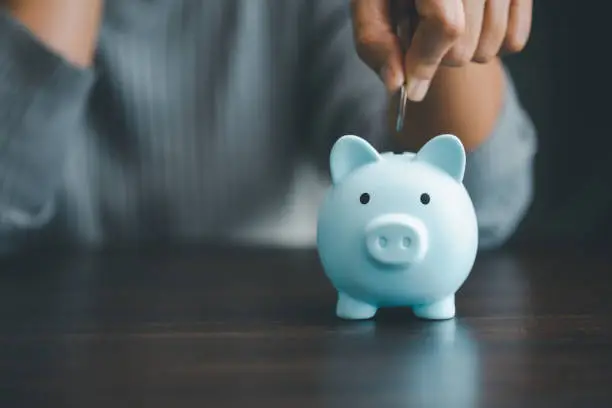Avenues that one may take in trying to save for a big purchase without falling into debt are enumerated below. Whether this goal is within a couple of months or within the next several years, this approach shall offer a pathway toward financial preparation and balance between present and future needs
Whether it is a car, a home, or some other big vacation dream, big purchases are fun. Big purchases have taken so much discipline and planning to make without going into debt in the past. It puts one in financial strain-not easy at all, especially if a person is not managing his or her debt properly. It is also, besides high-interest payments, time delayed against other important goals that come along the way. Save up for what you want and buy outright-no interest rates or piling debt-rather than loans or credit card debt.
Step 1: Setting your goal regarding the big purchase should be the first thing.
Clearly identify what that big purchase is going to be. It may involve knowing the approximate cost of reaching your goal. Once you know precisely what your goal costs, then you can make an effective plan.
Determine the Total Cost
Before you get the wheels of your savings plan turning, work out what is or approximately is the cost of this item. This is going to be your savings target. Consider less obvious costs of your purchase. For example:
•Car purchase: Add insurance, registration, taxes and maintenance costs.
•House purchase: Add closing costs, down payment, home inspection fees, moving costs, and renovations.
•Going on holiday: Estimate the travel costs, accommodation, food, activities, and probable emergency expenses.
Set a Deadline
Once you get the estimated price, you then set the deadline as to when you will be buying. It keeps you in the timeline that you want to follow and allows much more concentrated saving. Suppose at some point you want to buy an automobile going for $30,000 in two years; by now you must know you will save $15,000 annually or about $1,250 monthly.
Step 2: Assess Your Finances
At least before that big purchase, you should have a fairly good idea about what your financial standing is. Take the pain of going through how much you earn against the expenses incurred and your savings at hand.
Review Your Income
List down all your streams of income; these include salary, side jobs, investments, and so on and so forth. Once listed, go ahead and add up your total monthly income. You will thus have an idea of how much you are working with for the month and just how realistic your savings goal actually is.
Review Your Monthly Expenses
Look more closely at what you spend: Add up money spent on housing, groceries, utilities, transportation, entertainment and general discretionary spending. That helps you identify where you might be overspending in any one category, then cut where you can.
Assess Your Savings Opportunities
Having a fair perception of how much you earn and how much you spend, calculate how much you can set aside realistically every month for your big purchase. Account for indispensable expenses like rent, bills, and groceries while considering which of those unnecessary expenses one can cut.
Step 3: Devising a Savings Plan
Having done this, the next thing required was to outline clearly an appropriate savings plan that would be sufficient for the target but without reducing him to a level of indebtedness.
Open a Separate Savings Account
The best thing, when making such a huge purchase, is saving for it by opening another saving account for that very purpose. If you keep it separate, it would not be liquid-for everyday expenses and on impulse. Consider getting a high-yield savings account; at least make sure the money starts earning some interest while you save.
Set Up Automatic Transfers
Automate your savings process, and surely it shall be consistent. Set up your paycheck whereby it automatically transfers part of your check into your chosen savings account. Even as little as $50 or $100 a week develops habits of saving easily with the automatic transfers.
Apply the 50/30/20 Rule
The 50/30/20 rule: the method of budgeting in which, from earned income, the allocation is under three heads:
•50 for needs: housing, groceries, transportation.
•30 for wants: dining out, entertainment, vacations
•20 for savings or debt repayment.
If you seriously want to save up for something big, you might want to readjust that ratio for the time being. Invest more than 20% into savings and less into discretionary spending.
Break Down Your Objective into Bite-Sized Goals
It's always intimidating to think that one needs to save a sum of money - $30,000 or $50,000-whole at one time. Divide your target into smaller milestones. If your target is saving $50,000 over two years, make it your goal to save $12,500 every six months. Reward each milestone with a treat-nice dinner, weekend getaway, or some other treat that shall keep you motivated.
Step 4: Cut Unnecessary Expenses
In saving effectively, you may want to cut back on some of the discretionary expenses for a while. Cutting back does not necessarily mean that you should deprive yourself. Slight adjustment in your spending habits could go a long way in saving huge amounts over time.
Cut Back on Dining Out
Eating outings, restaurants, and takeouts are very costly. Save money by cooking at home and bringing leftovers with you to work to have for lunch. You does not have to stop eating out completely, just cut back from five times a week down to one or two times a month-really upping your savings.
Cancel Unused Subscriptions
Take a close look at your recurring month-on-month services-streaming services, gym memberships, apps, and anything else-cancel them if you don't use them often. Even $10-$20 per month will go a long way, and the money will surely count in no time.
Ditch Unnecessary Purchases
The next time you think you want to make an impulse purchase, take a second to reflect whether or not it will make reaching your goal easier. Training yourself to delay gratification and saving for that big purchase disciplines you and eliminates frivolous spending.
Step 5: Increase Your Income
If scaling back does not work in time, try scaling up your income. The more you bring in, the easier it'll be to hit your goal in less time.
Take Up a Side Gig
Anything from freelancing and consulting to driving for any of the ride-sharing companies to anything part-time. Give a thought to what kind of talents one may have which can be monetized. Extra money then can be routed to the savings account.
Sell Things That Aren't Needed
Walk around your house and select those things that you no longer need. You can sell your old clothes, furniture, electronic and other collections on online websites. It is pretty easy to sell on eBay, Poshmark, and Facebook Marketplace websites because buyers are already looking forward to buying them on these websites. So, they will be ready to buy immediately .
Think about Freelance or Gig Work
Develop a skill such as graphic design, writing, coding, and/or tutoring, for example. Then use that skill on freelance websites like Upwork or Fiverr. Let's just say those freelancing nights and weekends can really add up in terms of income in pretty short order.
Step 6: Use Windfalls Wisely
Windfalls of refunds, bonuses, or gifts can be used to make major increases in your savings plan. Rather than use such funds for consumer purchases, commit to putting a large portion-all, if possible-of the funds toward your savings goal.
Tax Refunds
A lot of people use their refund from taxes as an excuse to splurge. What many of them do not realize is that this may actually be one of the easiest ways you will be able to increase your savings. Instead of blowing it on going on holiday or blowing it in the mall, bank the whole amount in your savings account.
Work Bonuses
Budget to put that money toward your big purchase if you have a job that pays end-of-year or performance bonuses. This type of income is often not part of a regular budget, and therefore it's less painful than having to cut back each month.
Step 7: Stay Motivated and Track Your Progress
This is usually a long-term goal, and one can easily get discouraged at one time or another. A big purchase requires one to maintain focus and remain motivated, and this discipline will keep you away from dipping into your savings when it is not necessary.
Track Your Progress
Then, schedule a set time for regular check-ins to go over the progress thus far and how much you will need to continue saving. You can even track the progress toward your target in a spreadsheet, through an app, or using some visual savings tracker-the growing numbers will be quite encouraging when you happen upon them.
Reward Yourself for Achieved Milestones
Reward yourself every time you meet one of your savings goals. It can be as simple as going out one night, or buying something you have been wanting. You surely will stay on track when you acknowledge how far you have come.
Stay Focused on the Big Picture
Keep that in your head every time that impulse to spend wantonly, or to slack off on your savings schedule, beckons. Visualize how it's going to make you feel when you can do that debt-free. As a matter of fact, this kind of thinking might well be what starts a behavior change-in favor of satisfaction over gratification.
Step 8: Steer Clear of Debt Traps
But as you save for a big purchase, try not to take on new debt that could send you sliding back down. Generally the best way to avoid these kinds of debt traps is tracking where your money's going and using credit responsibly.
Don't Fall into the Credit Card Trap
Great for building up credit or rewards on credit cards, but can quickly turn into credit card debt if someone doesn't know how to handle them. If at all possible, try to avoid regular purchases on a credit card unless you are able to pay the entire balance off at the end of the month. High-interest credit card debt will quickly get in the way of your savings goals.
Say No to Buy-Now-Pay-Later Offers
Many retailers have financing plans which allow you to "buy now and pay later" over months or even years. These can be very tempting but are often at very high interest rates with extra fees. If you cannot pay cash for something, then just stick to your savings plan until you are able to pay for it in full. Resist the temptation to finance a purchase.
Conclusion
The big takeaway is that one can make this big purchase without getting into debt, and if one does, then it feels very rewarding. This means defining what you want, opening up a separate savings account for the same, readjusting your budget, and creatively brainstorming ways of bringing home extra money in order to hit those marks without sacrificing financial peace of mind and freedom. It requires just a little planning, discipline, and patience. Each dollar saved brings you closer to the target, and the satisfaction after a cash purchase far overshadows the weight of lingering debt. Just follow these steps, and you are well on your merry way to making that big purchase without having to give up on your financial future.


























